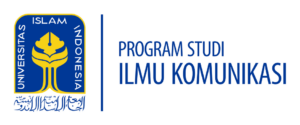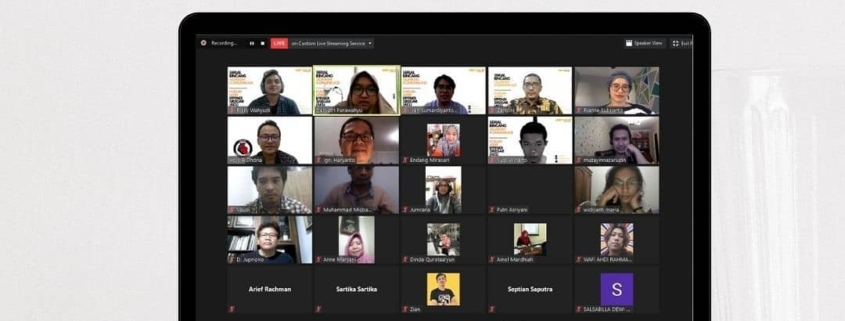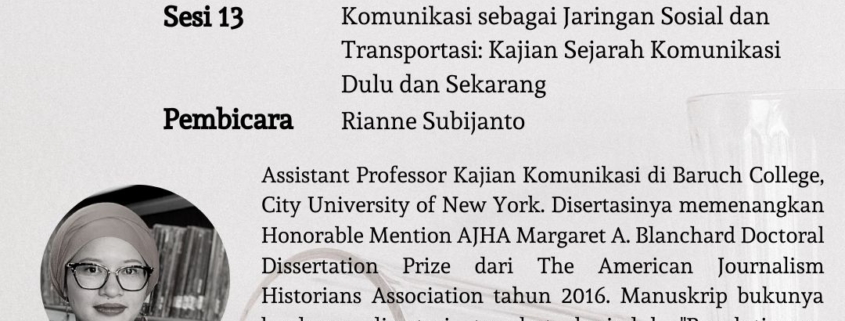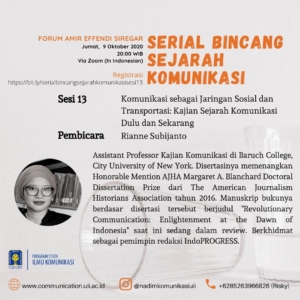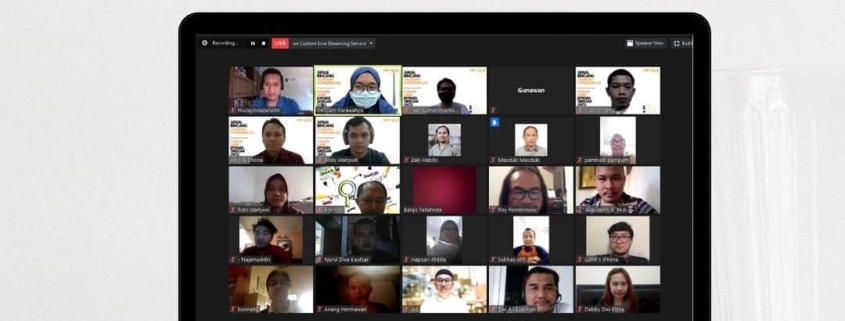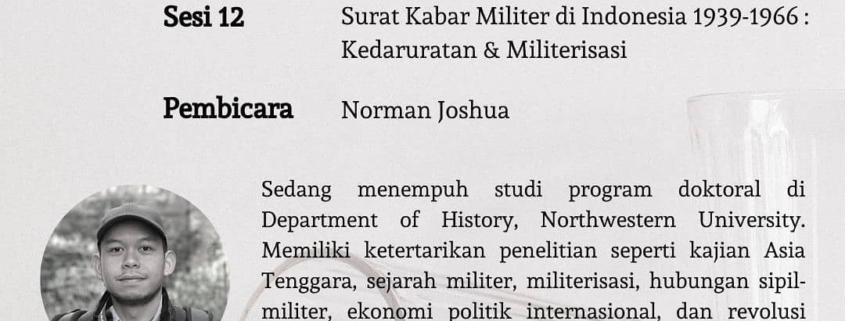The Forum Forum Amir Effendi Siregar # 13 this time 9 October 2020 is not as usual. Presenting Indonesian speakers who were studying in America made the discussion this time take time at night. This time, Rianne Subijanto, Assistant Professor of Communication Studies at Baruch College, City University of New York was the speaker at the AES Forum discussion tonight. He reveals the history of communication and discovers a time when a part of the study in communication was missing.
According to Rianne, in communication, there is a missing study. This study seems invisible. It seems that if we examine it today, there is even a lot of debate because it is considered not a communication domain anymore.
Rianne’s discussion raised the topic “Communication as Social Networks and Transportation: Historical Studies Past and Present.” Transportation which is part of communication studies is no longer initiated in many researches in the realm of communication.
Judging from the long history of communication, “communication studies have emerged. it’s only limited to communication that mediates new media such as print media, radio, television, and the internet, “said Rianne.
Communication System: Ancient Objects to Print Media
Riane continued that the age of media starting from printed media is still very young. and to be examined from the history, the practice of this communication age is very old. there was writing hieroglief and cuneiform written on slabs of brick in the civilization of mesopotamia. there paprirus, and there are pictures in the cave in the rock.
it is seen that the ancient objects that not only belongs to history, but also there is a communication process. Even communication is not only seen from the printed medium sec material fig. But more basic. Communication is also a process of exchanging meaning through oral, gestures, and facial expressions.
What is missing in Communication studies in Rianne’s view? He sees communication as transmission (transportation) and culture (ritual). If communication is seen from an exchange of meanings, then there is social exchange, there is cultural acculturation too. If seen from here communication is also chained by transportation. In ancient times people traveled by camel or donkey to trade. “And it turns out that there is a cultural exchange of the spread of Islam, cultural acculturation,” said Rianne.
Communication systems should be seen as transport networks and social networks as concepts. “However, now if we want to see transportation in communication studies, maybe people will ask geography or sociology first,” said Rianne.
